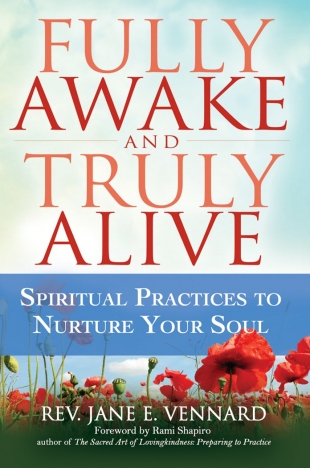"I have struggled with these teachings about attachment because I believed that if I were not attached, I would of necessity become detached. Detachment was to me synonymous with not caring. How could I not care about my writing, my teaching, my family? I didn't want to become withdrawn and passive, always on the margins of life. I wanted to be fully engaged. I realized I needed another place to stand and began to wonder what life might be like if I practiced nonattachment rather than detachment.
"Although those words are similar, I experience them very differently. Whereas attachment and detachment are static positions in opposition to each other, nonattachment is a dynamic middle way. Although it rests between the two poles, it is not a place but rather a movement or energy. Nonattachment becomes the dance between attachment and detachment during which we can receive the gifts and avoid the dangers of each.
"Attachment brings the gifts of engagement, passion, and risk. When I am writing a lecture, I am deeply attached to the ideas, to my desire to be clear and evocative and connected to the group that will hear my presentation. This engagement connects me with the material and the audience, gives passion to my words and delivery, and allows me to take risks in what I say and the stories I choose to tell. But if I become attached to having my words applauded, my ideas accepted, my lecture a huge success, I have succumbed to the dangers of attachment — enmeshment, self-deception, and the loss of vision. When I become aware of the dangers of attachment, I can counter my desire for success by moving toward the gifts of the opposite pole — detachment.
"Detachment holds the gifts of perspective, clarity, and self-reflection. If, for example, you choose to serve abused women in the local safe house, you will need these gifts. You will need to stand back and see clearly what the women are coping with and the reality of their situations. You will need to hear the stories of the women and their feelings without drowning in them. You will need to reflect on your own life and choices if you wish to understand the lives and choices of others. But if you become too detached, you will experience the dangers of this extreme position and find yourself isolated, lacking compassion, and avoiding responsibility. Noticing when this begins to happen, you can move back toward the gifts of attachment and find new ways to reengage with the women you serve.
"To live with an attitude of nonattachment is to dance your way between attachment and detachment. It is a process and a practice. You pay attention to where you are, to what is happening in your heart and mind; you notice if you are moving to one extreme or the other, then gently correct yourself toward the center. You gratefully accept the gifts from both sides of the polarity and dance away from the dangers. You are learning the dance of letting go and staying engaged. In the words of wisdom from the Sufi tradition, you are learning to 'trust in God and tie your camel.' "
